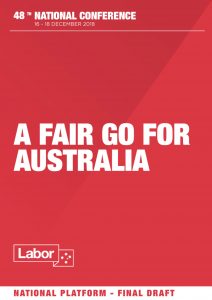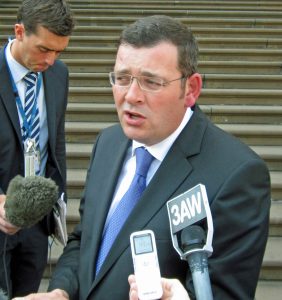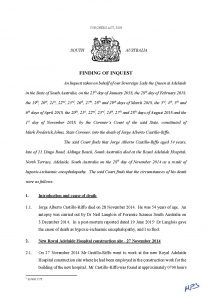 This Sunday SafetyAtWorkBlog will be reporting from the 2018 National Conference of the Australian Labor Party (ALP). It promises to be extra lively as the country is only a few months away from a General Election and the ALP is tipped by most to win, or rather, the Liberal/National Coalition to lose. The intention is to watch for discussion of issues that relate to, or affect, the management of worker health and safety. There will be some, if one accepts that the most effective and sustainable occupational health and safety (OHS) solutions come from both a introduce multidisciplinary approach and that one that looks “at the source” of hazards.
This Sunday SafetyAtWorkBlog will be reporting from the 2018 National Conference of the Australian Labor Party (ALP). It promises to be extra lively as the country is only a few months away from a General Election and the ALP is tipped by most to win, or rather, the Liberal/National Coalition to lose. The intention is to watch for discussion of issues that relate to, or affect, the management of worker health and safety. There will be some, if one accepts that the most effective and sustainable occupational health and safety (OHS) solutions come from both a introduce multidisciplinary approach and that one that looks “at the source” of hazards.
The current draft National platform has a specific chapter on Safety At Work but the document is riddled with safety commitments. Curiously there is no specific mention of Industrial Manslaughter, although the ALP will
“ensure there are strong deterrents for employers who are responsible for workplace deaths”.



 Every industry sector should have its own occupational health and safety (OHS) conference. This allows for specific OHS topics to be presented but also provides for a broader context. The recent conference conducted by the
Every industry sector should have its own occupational health and safety (OHS) conference. This allows for specific OHS topics to be presented but also provides for a broader context. The recent conference conducted by the  If all you knew about occupational health and safety (OHS) was what you read in the physical or online newspapers , you would not know anything about safety management – or maybe anything positive. It takes being involved with managing safety in the real world to understand how OHS operates in the real world. But even then we only learn from our own experiences.
If all you knew about occupational health and safety (OHS) was what you read in the physical or online newspapers , you would not know anything about safety management – or maybe anything positive. It takes being involved with managing safety in the real world to understand how OHS operates in the real world. But even then we only learn from our own experiences.
